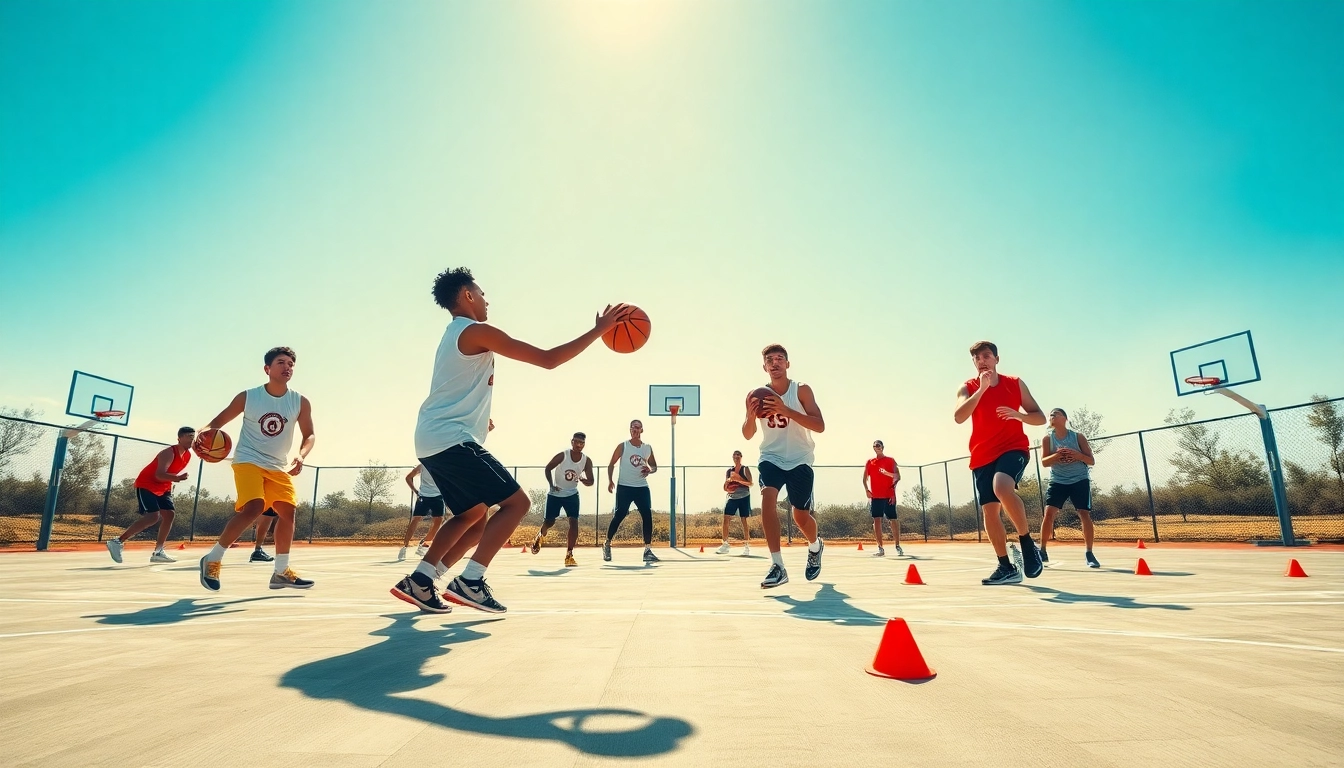Understanding the Best Basketball Training Programs
Basketball is a game that requires not only physical skill but also a deep understanding of the sport and the ability to work in a team dynamic. For many aspiring athletes, finding the right training program can be pivotal to their success. The best basketball training programs are designed to hone essential skills, improve physical fitness, and ultimately, elevate a player’s game to the next level. In this comprehensive guide, we will explore the characteristics of effective training programs, the various types available, how to select the right one for your needs, and the importance of integrating strength and conditioning into your training routine.
What Makes a Program Effective?
Effective basketball training programs share certain key elements that contribute to the overall development of a player. These include personalized coaching, structured lesson plans, and a focus on measurable outcomes. A significant factor is the quality of coaching; experienced trainers who understand the intricacies of basketball and the nuances of teaching can make a vast difference in how effectively players absorb new skills.
Moreover, an effective program also tailors its curriculum to the needs of individual players. Whether a player is working on perimeter shooting, ball handling, or defensive strategies, the ability to customize training sessions to target specific weaknesses is essential for rapid improvement.
Key Components of Training Success
Several components contribute to success in basketball training programs:
- Skill Development: Continual focus on developing fundamental skills, such as dribbling, shooting, and passing.
- Game Situations: Incorporating scenarios that players may face during actual games can enhance decision-making skills.
- Mental Conditioning: The psychological aspect of training, including visualizing success and overcoming challenges, is a crucial component often overlooked.
- Nutritional Guidance: Understanding dietary needs can help players fuel their bodies for optimal performance.
Targeting Player Skill Development
The best basketball training programs utilize drills that not only refine existing skills but also introduce new techniques. This variety keeps training sessions engaging and encourages players to step out of their comfort zones to facilitate growth. For instance, while many players are accustomed to practicing shooting from specific distances, effective programs will challenge them with off-balance shots, different angles, and under defensive pressure.
Types of Basketball Training Programs Available
With the rise of digital platforms, basketball training programs now come in many formats, each with their own advantages and disadvantages.
Online vs. In-Person Training
Online training experiences have surged in popularity, offering players flexibility and access to a range of resources. Programs like those offered by Jordan Lawley feature instructional videos and customizable workouts, catering to individual skill levels. This can be especially beneficial for players in remote areas or those balancing tight schedules.
Conversely, in-person training programs, such as those provided by local clinics or camps, offer direct interaction with coaches, immediate feedback, and opportunities for live competition. The environment can foster teamwork and camaraderie, which are vital in the sport of basketball. The interpersonal aspect tends to create an immediate feedback loop that can enhance learning.
Specialized Training Camps and Clinics
Specialized training camps focus on specific areas of the game, such as shooting, defense, or even mental toughness. Programs like the IMG Academy Basketball Camp are designed to provide intensive coaching for players looking to refine specific skills or enhance their game strategy in a concentrated format over a short period. This focused approach can yield significant improvements in a player’s skills faster than traditional training methods.
Local vs. National Training Initiatives
Local programs often provide personalized attention, enabling trainers to focus on the unique needs of players in their communities. These initiatives are crucial for grassroots development, ensuring that even young players from diverse backgrounds have access to quality training. National initiatives, on the other hand, often feature high-level competitions or exposure to professional coaching, offering pathways to college scholarships or professional opportunities.
How to Choose the Right Training Program
Selecting a basketball training program is a critical decision for any player or parent. Various factors come into play, ensuring alignment with the player’s goals and skills.
Assessing Skill Levels and Goals
Before enrolling in a training program, players must comprehensively assess their current skill levels and define their goals. Is the aim to develop specific technical skills, improve overall fitness, or prepare for a competitive season? This self-assessment helps in selecting a program tailored to meet personal objectives, whether it be enhancing free throw percentages or defensive positioning.
Understanding Coaching Philosophies
Different coaches have unique philosophies, which can drastically affect training outcomes. Some may emphasize a strong foundation in fundamental skills, while others may adopt a more game-oriented approach. Understanding a coach’s style, communication methods, and their ability to foster a positive learning environment is essential. Evaluating testimonials or observing training sessions can provide insights into these coaching styles.
Evaluating Program Reviews and Outcomes
Prospective students should also consider reviews from previous participants. Were players able to make measurable improvements? Did they enjoy the experience? Measuring outcomes such as player retention rates can also indicate program quality. Engaging with community forums and reviews can help clarify the effectiveness of various basketball training programs.
Integrating Strength and Conditioning into Training
While skill development is vital, strength and conditioning play a pivotal role in a basketball player’s overall performance. Incorporating physical fitness elements ensures players can not only execute skills effectively but also withstand the physical demands of the game.
Importance of Physical Fitness for Basketball Players
Physical fitness for basketball encompasses a range of elements, including speed, agility, strength, and stamina. Each of these components contributes to a player’s performance on the court, making it essential for all training regimens. For example, strength equips players to absorb contact more effectively, while agility helps them navigate defenders, enhance their quickness, and create shot opportunities.
Balancing Skills and Athletic Development
A comprehensive training program should incorporate both skill work and physical conditioning. This dual focus not only prevents injuries by preparing the body for the rigors of the game but also enhances the execution of skills under physical stress. Programs that understand and blend these components tend to yield the best results, as players emerge more balanced in their abilities.
Monitoring Progress and Adjusting Training Plans
Regular assessment and feedback mechanisms are crucial in any training program. By monitoring progress against established benchmarks, players and coaches can adjust training plans as necessary. This could involve ramping up intensity in specific areas, addressing weaknesses, or integrating new drills to avoid stagnation. For instance, a player who excels at shooting may need targeted conditioning to improve defensive capabilities.
Measuring Success: Tracking Improvement
Defining success in basketball goes beyond just scoring. Players should have a clear understanding of benchmark improvements and how to track them.
Setting Achievable Goals and Benchmarks
Setting SMART goals (Specific, Measurable, Achievable, Relevant, Time-bound) can provide clarity and focus in training. Individual improvement metrics could range from shooting accuracy percentages to successful defensive stops per game. These parameters help maintain motivation and allow for adjustments along the way as players progress.
Utilizing Technology for Skill Assessment
In today’s digital age, technology has revolutionized how players evaluate their skills. Tools like shooting monitors, video analysis software, and performance tracking applications allow players and coaches to analyze film, break down movements, and track improvement over time. Incorporating technology can lead to more data-driven training decisions and highlight areas needing further development.
Celebrating Milestones in Player Development
Recognizing and celebrating progress, whether through public acknowledgment or personal reflection, can bolster motivation and commitment to ongoing training. Milestones might include achieving personal records, mastering a particular skill, or making a team. These celebrations reinforce the hard work put in and encourage players to continue striving toward their next set of goals.
In conclusion, the landscape of basketball training programs has evolved significantly, providing players with a wealth of resources and opportunities. By understanding the various components of effective training, types of programs available, and the steps necessary to evaluate and select the right approach, players can embark on a path to improvement that aligns with their unique ambitions and aspirations. With the proper training program and dedication, anyone can elevate their basketball skills and reach their full potential on the court.



